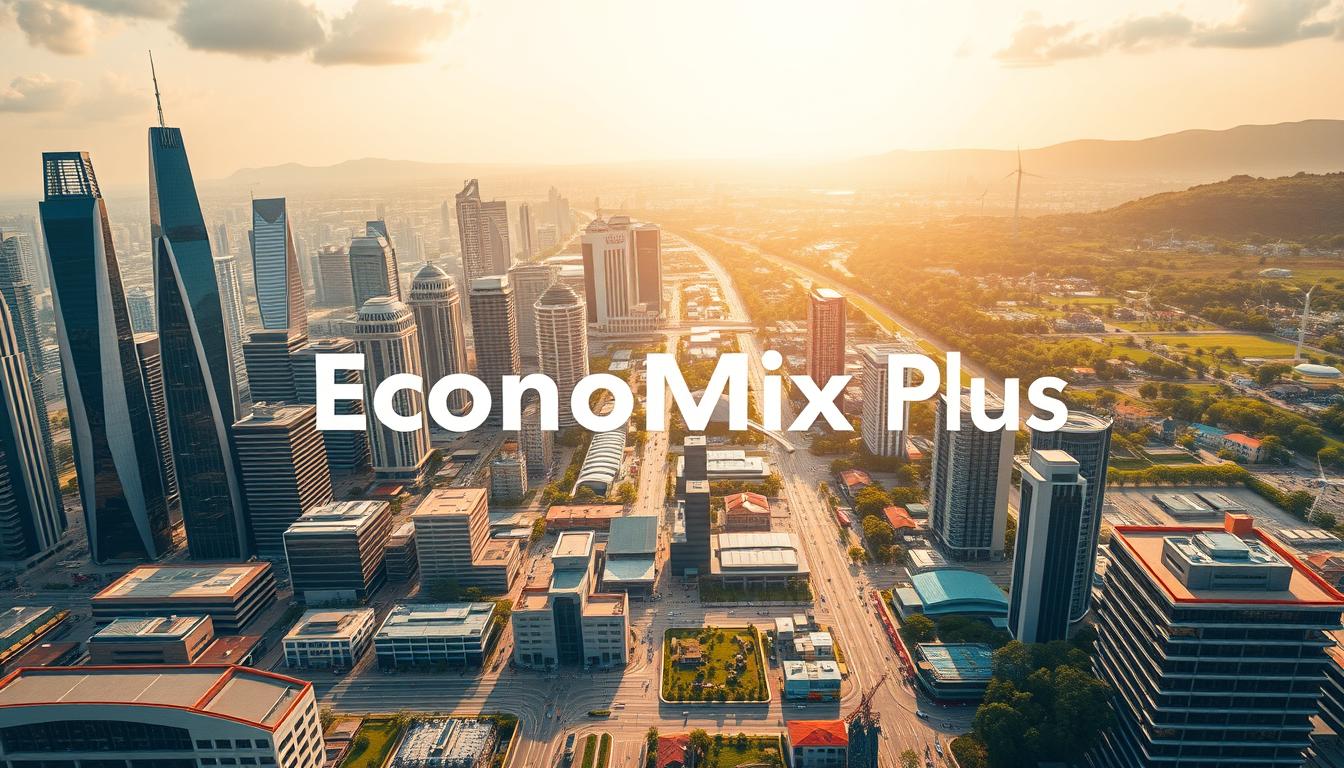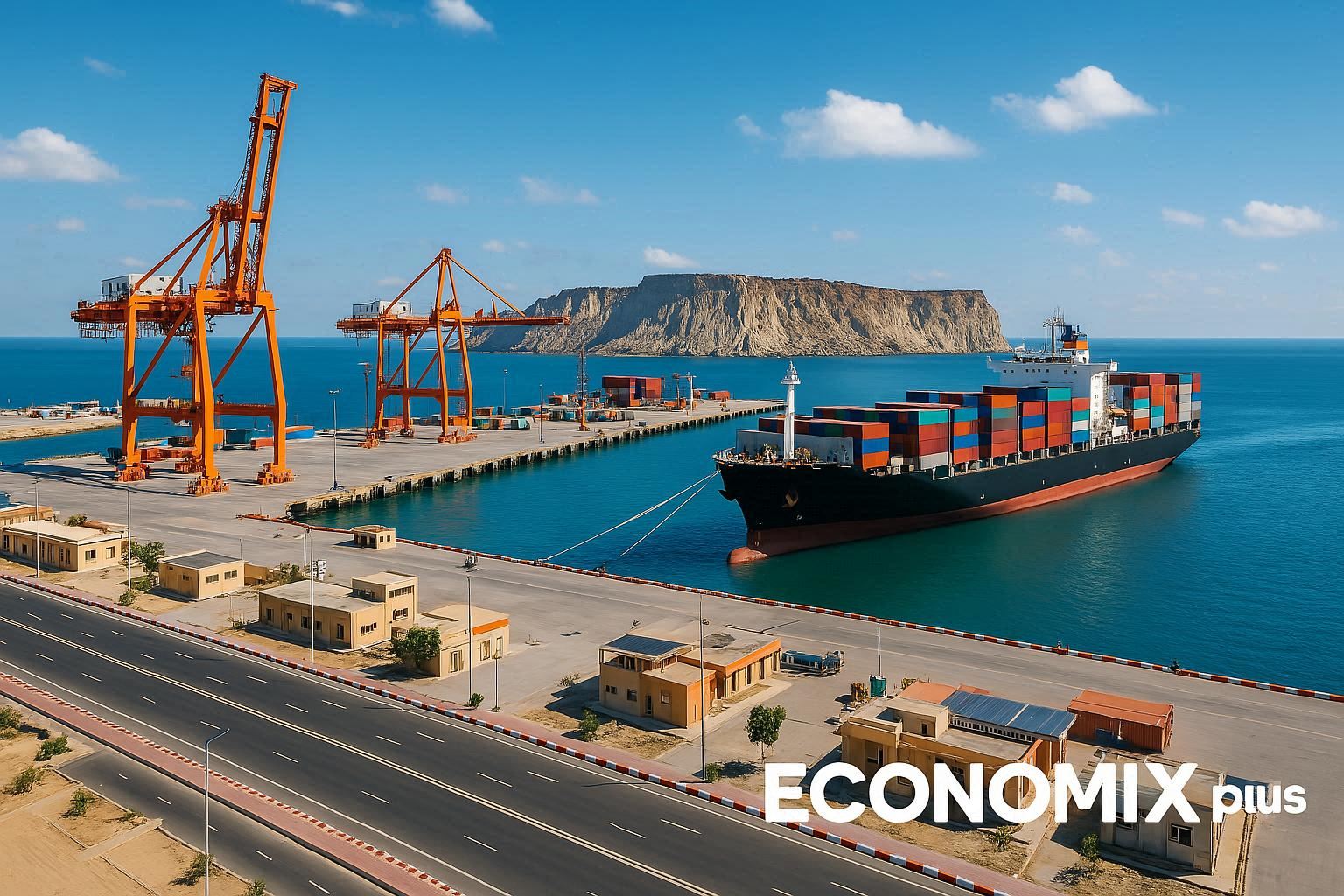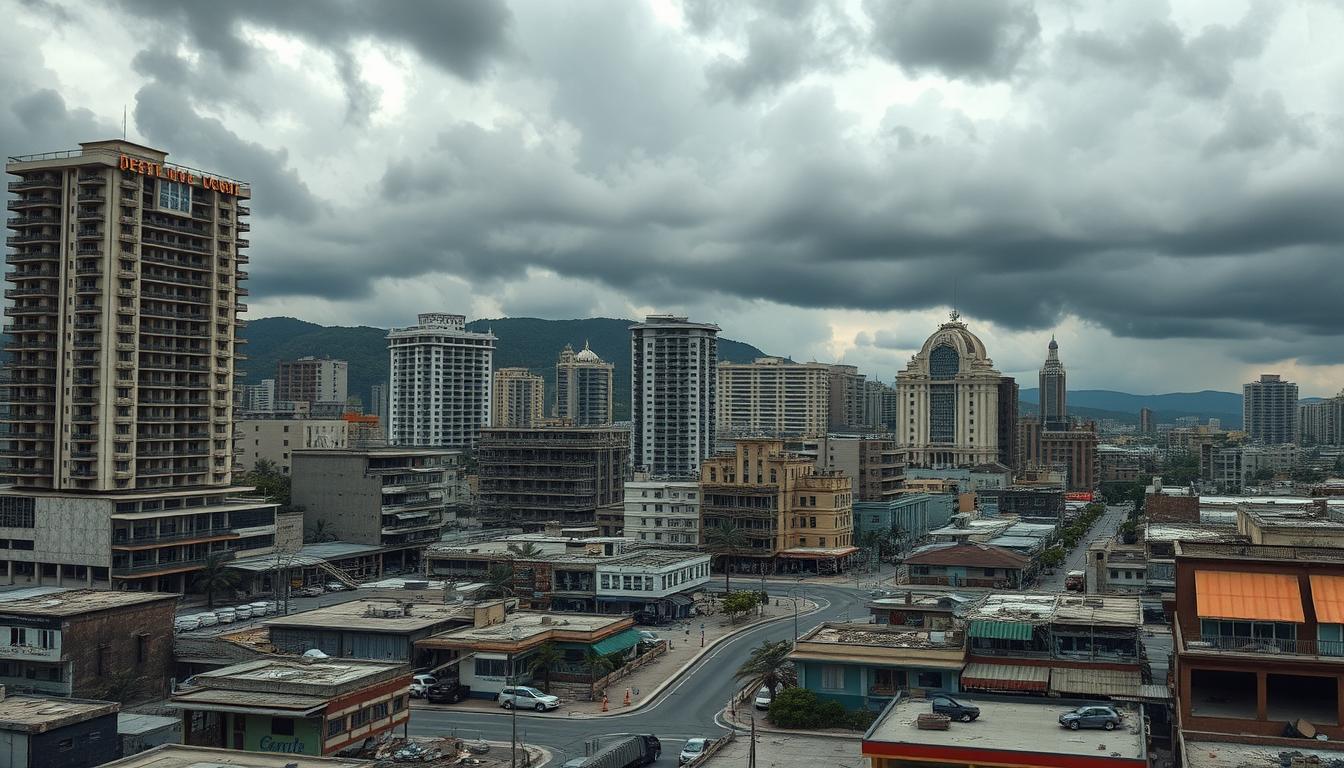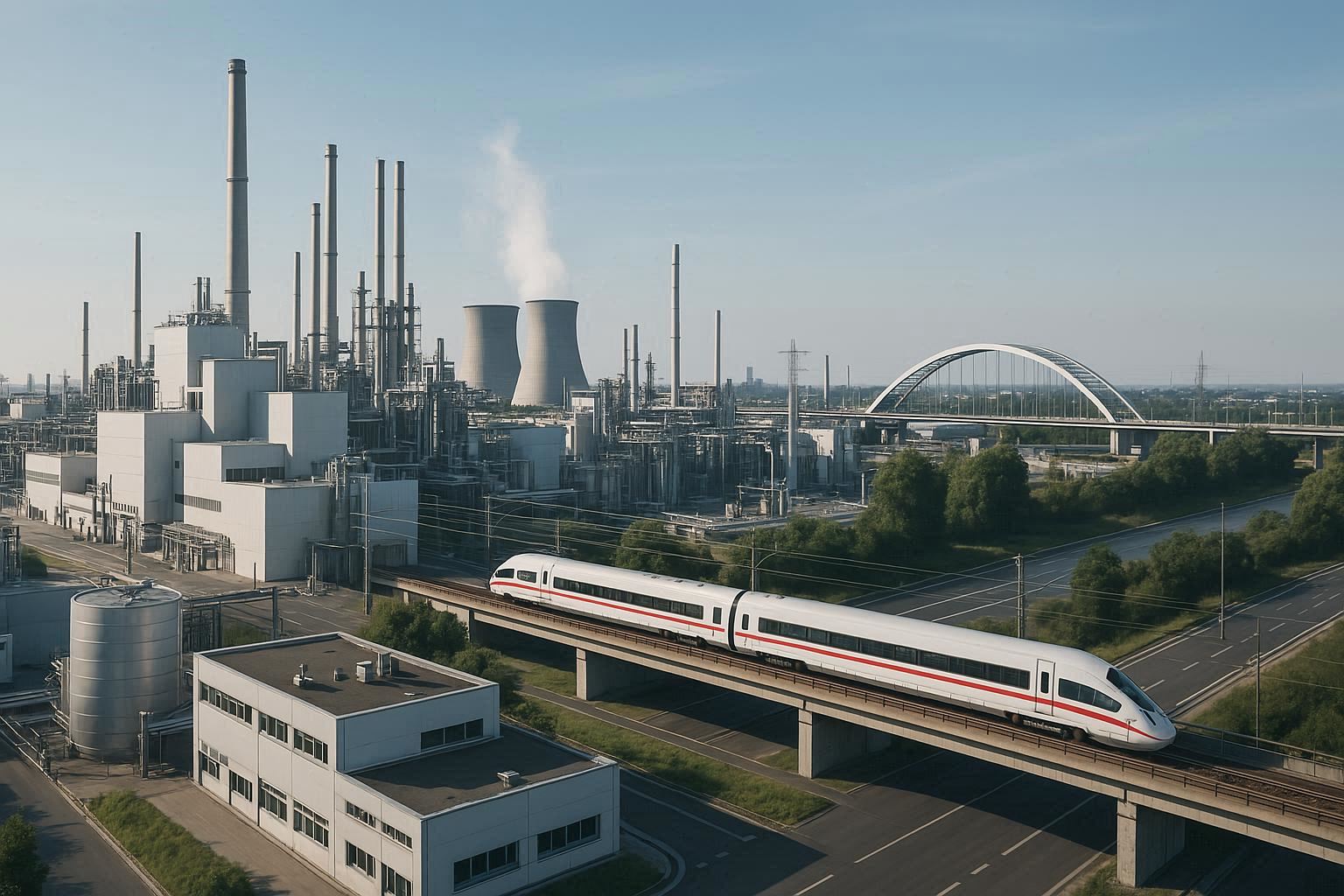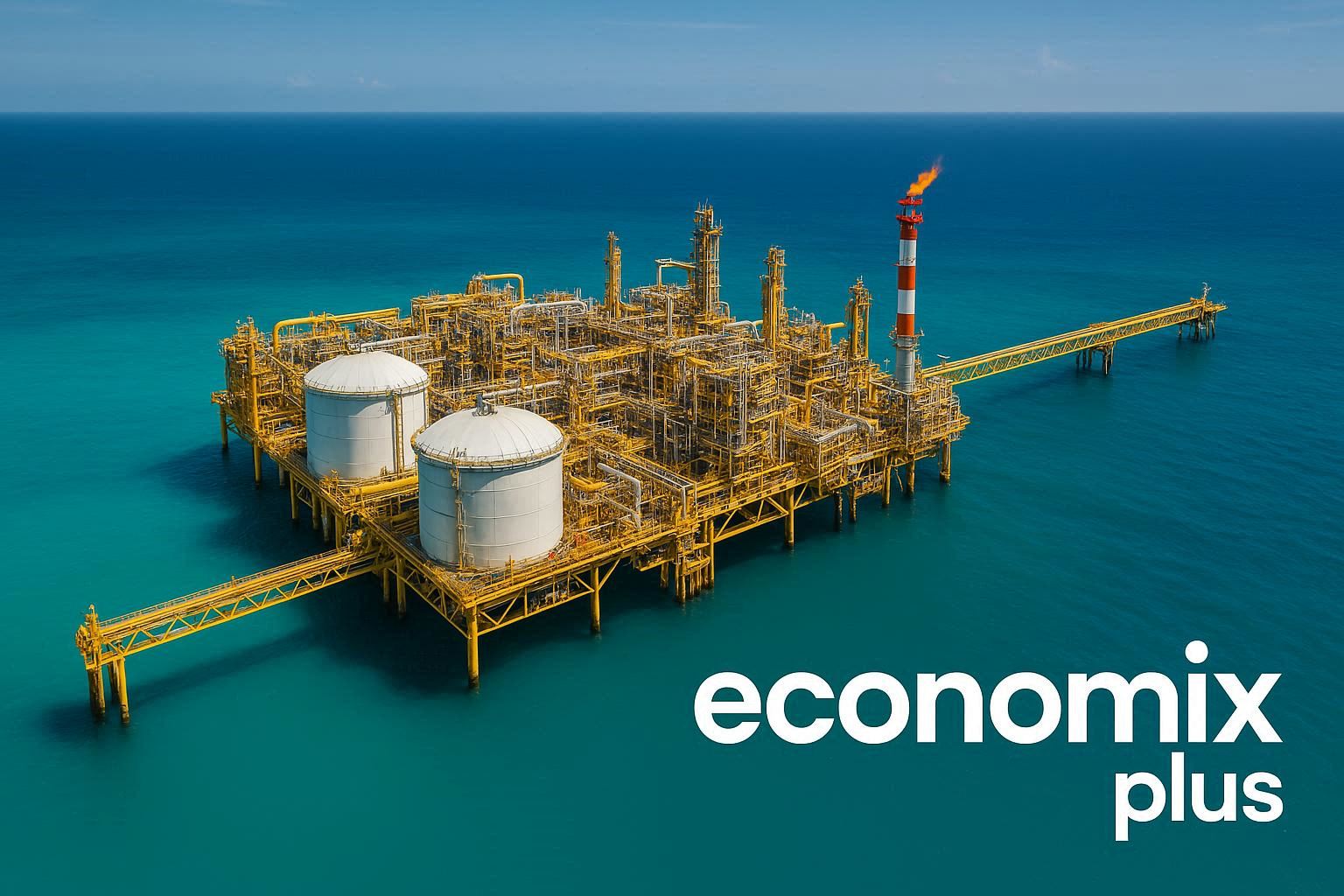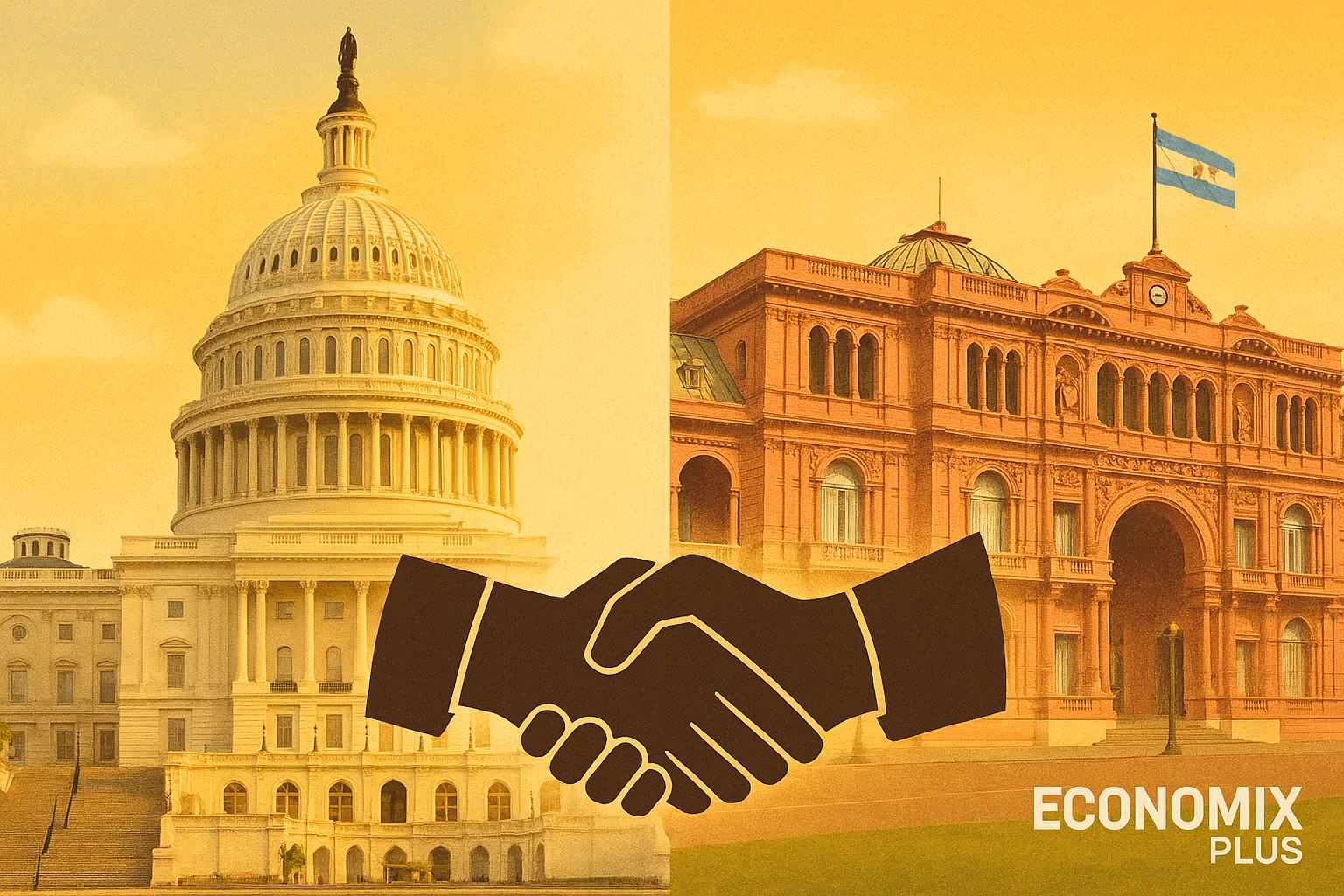As the global economy continues to evolve, Gulf Cooperation Council countries are faced with the pressing challenge of diversifying their economies. The coronavirus pandemic has accelerated this need, with Brent crude prices plummeting to historic lows in 2020. Can Qatar and Kuwait successfully navigate this transition, or will their reliance on hydrocarbon revenues hinder their progress?
The issue of economic diversification has gained renewed urgency in the region, as countries recognize the long-term unsustainability of their oil and gas reserves. Both Qatar and Kuwait are taking unique approaches to reduce their dependence on these finite resources and foster sustainable economic growth.
Key Takeaways
- Gulf Cooperation Council countries are prioritizing economic diversification.
- Qatar and Kuwait are taking distinct approaches to reduce hydrocarbon dependency.
- The success of their strategies will depend on various economic indicators and policy frameworks.
- Both nations are leveraging their oil wealth to build knowledge economies.
- The comparison between Qatar and Kuwait will provide valuable insights into their future prospects.
The Resource Curse and Gulf Economies
The abundance of oil and gas in GCC nations has sparked a delicate balancing act between leveraging these resources for growth and avoiding the traps of over-reliance. The states of the Gulf Cooperation Council (GCC) — Bahrain, Kuwait, Oman, Saudi Arabia, Qatar, and UAE — have utilized their large oil and gas wealth to propel rapid development starting from the 1970s, maintaining a relatively stable social order. However, these states rely heavily on oil and gas revenues for funding state expenses as well as covering the costs of imports.
Understanding the Resource Curse Phenomenon
The resource curse refers to the paradox that countries with an abundance of natural resources tend to have less economic growth, less democracy, and worse development outcomes than countries with fewer natural resources. This phenomenon is often attributed to the volatility of commodity prices, corruption, and the distortion of the economy due to over-reliance on a single resource. GCC countries have been keenly aware of this risk and have taken steps to mitigate it through economic diversification efforts.
By investing in various sectors, GCC nations aim to reduce their dependence on oil revenues and create more sustainable economies. This involves developing infrastructure, enhancing education and healthcare systems, and promoting other industries to ensure growth and development beyond the energy sector.
How Gulf States Have Navigated Resource Wealth
GCC countries have largely avoided the most severe aspects of the resource curse through strategic planning and governance structures. They have utilized their hydrocarbon wealth to build modern infrastructure, develop human capital, and establish sovereign wealth funds. These nations have also invested heavily in education, healthcare, and public services, improving the quality of life for their citizens and enhancing their economic resilience.
The government plays a crucial role in managing resource revenues, allocating them towards various development projects and initiatives aimed at diversifying their economies. By subsidizing economic development in non-oil sectors, GCC states have made significant strides in creating more balanced economies, though the degree of success varies among them.
The unique social contracts in Gulf states, where citizens receive benefits from oil wealth in exchange for political stability, have also played a significant role in maintaining social cohesion and stability. This social contract is a key factor in the region’s ability to navigate the challenges associated with the resource curse.
Economic Profiles: Qatar and Kuwait at a Glance
The economic structures of Qatar and Kuwait are characterized by their heavy dependence on oil revenues, making their diversification efforts critical for long-term sustainability. Both countries, significant players in the global oil market, have been exploring ways to reduce their reliance on hydrocarbon revenues.
Qatar’s Economic Structure and Key Indicators
Qatar’s economy is driven primarily by its vast natural gas reserves, with LNG production being a major contributor to its GDP. The country’s economic profile is marked by high per-capita income and significant government revenues from the energy sector. Efforts towards economic diversification have led to investments in various sectors, including finance, tourism, and real estate.
The government of Qatar has been proactive in implementing policies to attract foreign investment and promote private sector growth. Initiatives under Qatar National Vision 2030 aim to diversify the economy, enhance the business environment, and develop human capital.
Kuwait’s Economic Structure and Key Indicators
Kuwait’s economy is heavily reliant on oil, with petroleum accounting for over 90% of government revenue and export earnings. The country’s GDP is largely composed of oil revenues, making it vulnerable to fluctuations in global oil prices. Kuwait possesses approximately 7% of the world’s proven oil reserves, underscoring its significant position in the global oil market.
The public sector dominates Kuwait’s economy, with a large share of the workforce employed by the government. The sovereign wealth fund plays a crucial role in managing the country’s oil revenues and serves as a buffer against oil price volatility. Efforts towards economic diversification in Kuwait have been slower compared to some of its Gulf counterparts, partly due to its unique political system and the challenges it poses to implementing economic reforms.
Oil and Gas Dependency: Comparative Analysis
While both Qatar and Kuwait rely heavily on oil and gas revenues, a closer examination reveals distinct differences in their economic structures and diversification efforts. This section will delve into the specifics of each country’s hydrocarbon sector, examining their dependency on oil and gas, and the implications for their economic stability.
Qatar’s Hydrocarbon Sector: LNG Dominance
Qatar’s economy is characterized by its significant liquefied natural gas (LNG) reserves, making it one of the world’s leading LNG producers. The country’s hydrocarbon sector is dominated by QatarEnergy, formerly known as Qatar Petroleum, which plays a crucial role in the country’s economic landscape.
Qatar’s LNG Strategy: Qatar’s focus on LNG has allowed it to diversify its energy exports, reducing its dependence on crude oil. This strategic decision has positioned Qatar as a major player in the global energy market, with its LNG exports reaching various countries worldwide.
The development of LNG infrastructure has also spurred the growth of related industries, contributing to the country’s economic diversification efforts. However, the country’s economy remains heavily reliant on hydrocarbon revenues.

Kuwait’s Oil-Centric Economy
Kuwait’s economy, on the other hand, is more heavily reliant on crude oil production. The petroleum sector accounts for approximately 50% of Kuwait’s GDP, 92% of export revenues, and 90% of government income, making it one of the most oil-dependent economies in the Gulf region.
Kuwait’s Oil Production Infrastructure: Kuwait has a significant oil production capacity of about 3.15 million barrels per day, ranking it as the world’s 9th largest oil producer. The Kuwait Petroleum Corporation (KPC) is the state-owned entity responsible for the country’s oil and gas production, playing a dominant role in the economy.
| Economic Indicator | Qatar | Kuwait |
|---|---|---|
| Primary Hydrocarbon Export | LNG | Crude Oil |
| Hydrocarbon Sector’s Share of GDP | Significant, but diversifying | Approximately 50% |
| Export Revenues from Hydrocarbons | Diversified energy exports | 92% from oil |
The comparison between Qatar and Kuwait’s hydrocarbon dependency highlights different approaches to managing oil and gas resources. While Qatar has diversified its energy exports through LNG, Kuwait remains heavily reliant on crude oil production. Understanding these differences is crucial for assessing their economic resilience and diversification efforts.
The Social Contract in Gulf States
The social contract in Gulf states is a complex system influenced by oil revenues. In these countries, the government plays a significant role in distributing wealth to citizens through various mechanisms, creating a unique social and economic dynamic.
Gulf states have been able to pass on their wealth to citizens through three main channels: improved public benefits and services, public sector employment opportunities, and access to economic rents through government contracts and licenses. This approach has shaped the social contract, making citizens heavily reliant on government support.
Wealth Distribution Mechanisms in Qatar
Qatar has implemented various wealth distribution mechanisms to support its citizens. The government provides extensive public services, including education and healthcare, which are largely free or heavily subsidized. Additionally, Qatari citizens have access to public sector employment opportunities that offer higher wages and better benefits compared to the private sector.
The Qatari government has also encouraged private sector growth by providing business opportunities and support. However, the reliance on oil revenues remains a significant factor in the country’s economy. To diversify its economy, Qatar has been investing in various sectors, including finance, tourism, and real estate.
| Wealth Distribution Mechanisms | Description |
|---|---|
| Public Services | Free or subsidized education and healthcare |
| Public Sector Employment | Higher wages and better benefits for citizens |
| Business Opportunities | Government support for private sector growth |
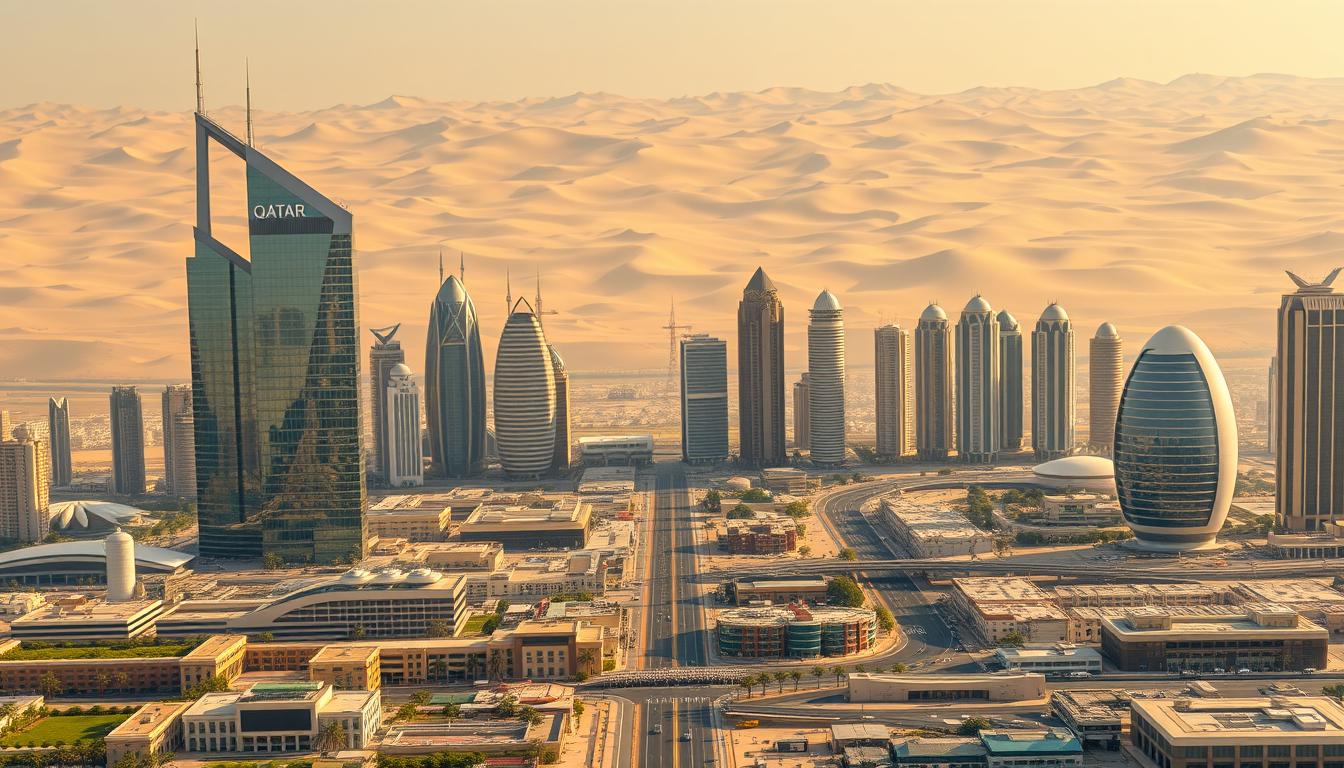
Kuwait’s Approach to Citizen Benefits
Kuwait has developed one of the most generous citizen benefit systems in the Gulf region. The country’s welfare state is funded primarily by oil revenues, providing comprehensive support to citizens from birth to old age. This includes subsidies for essential services like fuel, electricity, and water, as well as basic food items.
A significant aspect of Kuwait’s social contract is its public employment guarantee for citizens. Approximately 80% of employed Kuwaitis work in the public sector, where wages are substantially higher than in the private sector. Kuwait also practices a unique “citizen’s dividend” approach, where direct cash transfers and benefits are considered rights rather than privileges.
Kuwait’s parliamentary system has often prioritized expanding citizen benefits over economic diversification, creating political challenges to reform. Despite this, the government has taken steps to improve the business environment and encourage private sector growth.
The social contract in both Qatar and Kuwait reflects the significant role of oil revenues in shaping their economies and societies. While both countries have made efforts to diversify their economies, the reliance on oil remains a dominant factor.
Vision 2030 and National Development Plans
Both Qatar and Kuwait are focusing on long-term national visions to drive economic growth and reduce reliance on hydrocarbon exports. These visions are comprehensive frameworks that guide the countries’ development strategies, aiming to create diversified economies and improve the quality of life for their citizens.
Qatar National Vision2030: Goals and Implementation
Qatar’s National Vision2030 is a forward-looking plan that outlines the country’s aspirations for economic diversification, human development, and social progress. The vision emphasizes the need to develop a diversified economy, enhance the role of the private sector, and improve education and healthcare systems.
The implementation of Qatar National Vision2030 involves several key initiatives, including investments in infrastructure, the promotion of foreign investment, and the development of a knowledge-based economy. Qatar has also been focusing on enhancing its business environment to attract international companies and talent.

Kuwait’s Development Vision: Strategy and Execution
Kuwait’s development vision, known as “New Kuwait,” aims to transform the country into a financial and commercial hub by reducing oil dependency, encouraging private sector participation, and developing human capital. The strategy is built around seven pillars: effective public administration, diversified economy, quality infrastructure, sustainable living environment, high-quality healthcare, creative human capital, and distinguished international status.
The execution of Kuwait’s development vision includes several ambitious projects, such as the development of the Silk City and five islands with a projected investment of $86 billion. Additionally, Kuwait is working on establishing a Northern Economic Zone to create an alternative economic hub with special regulations to attract foreign investment.
Despite these efforts, Kuwait faces challenges in executing its vision, including bureaucratic obstacles, political gridlock, and resistance to reforms. Addressing these challenges is crucial for the successful implementation of Kuwait’s development strategy.
Diversification Strategies and Initiatives
The Gulf Cooperation Council (GCC) countries are actively pursuing economic diversification, moving beyond their traditional reliance on oil and gas. This strategic shift is driven by the need to reduce dependence on hydrocarbon revenues and promote sustainable economic growth.
Qatar’s Diversification Approach
Qatar has been implementing various initiatives to diversify its economy, focusing on sectors such as finance, tourism, and manufacturing. The Qatar National Vision 2030 outlines the country’s long-term development goals, emphasizing the importance of economic diversification.
Key Initiatives:
- Development of non-hydrocarbon sectors
- Investment in infrastructure projects
- Promotion of foreign investment
Qatar’s diversification strategy also includes the development of its financial sector, aiming to position itself as a regional financial hub.
| Sector | Initiatives | Expected Outcome |
|---|---|---|
| Finance | Establishment of financial institutions, investment in fintech | Increased financial sector contribution to GDP |
| Tourism | Development of tourism infrastructure, promotion of cultural events | Growth in tourism revenue |
| Manufacturing | Investment in industrial zones, support for SMEs | Diversification of economy, job creation |
Kuwait’s Path to Economic Diversification
Kuwait’s diversification approach has been more cautious and incremental, focusing on developing financial services, logistics, and trade while maintaining its oil sector as the economic backbone.
Key Challenges:
- Political system hindering reforms
- Dependence on oil revenues
- Need for private sector growth
Kuwait has established the Kuwait Direct Investment Promotion Authority (KDIPA) to attract foreign investment and promote private sector development.
The privatization program in Kuwait aims to transfer state-owned enterprises to the private sector, though implementation has been slower than initially planned.
Kuwait’s efforts to develop its financial sector leverage its historical strength in investment and banking, positioning Kuwait City as a regional financial center.
Financial Sector Development
With a strong emphasis on economic diversification, Qatar and Kuwait are developing their financial sectors to support sustainable growth. The financial sector plays a vital role in bridging the productive and commodity circuits, facilitating economic activities and investments.
GCC governments have been actively supporting sectors that align with their economic diversification goals, often reflecting policymakers’ preferences and the competitive strengths of their economies. As part of this strategy, both Qatar and Kuwait have been focusing on enhancing their financial systems.
Qatar’s Banking and Investment Landscape
Qatar’s financial sector has experienced significant growth, driven by its strategic location, political stability, and business-friendly environment. The country’s banking system is robust, with a mix of conventional and Islamic banks offering a range of financial services.
The Qatar Financial Centre (QFC) has been instrumental in attracting international banks and financial institutions, promoting the country as a regional financial hub. Investments in fintech and digital banking are also on the rise, enhancing the sector’s efficiency and competitiveness.
- Qatar’s financial sector is characterized by its strong regulatory framework and adherence to international standards.
- The country’s investment landscape is diverse, with opportunities in real estate, infrastructure, and various industries.
Kuwait’s Financial System Evolution
Kuwait has one of the oldest and most established financial sectors in the Gulf region. The country’s banking tradition dates back to 1941, and it hosts the region’s first stock exchange, established in 1977.
The Kuwait Investment Authority (KIA), established in 1953, is the world’s first sovereign wealth fund. It manages assets estimated at over $700 billion through its Future Generations Fund and General Reserve Fund, playing a crucial role in the country’s economic strategy.
Kuwait’s capital markets, including Boursa Kuwait, have undergone significant reforms to attract foreign investment. The exchange was upgraded to emerging market status by MSCI in 2019, reflecting its growing importance in the global investment landscape.
Kuwait is also positioning itself as an Islamic finance hub, with significant growth in Sharia-compliant banking and investment products. This aligns with cultural values while supporting economic diversification efforts.
Infrastructure and Mega-Projects
As part of their economic diversification strategies, Qatar and Kuwait have embarked on substantial infrastructure investments and mega-projects. These initiatives are crucial for driving growth and developing various sectors within their economies.
Qatar’s Infrastructure Investments and World Cup Legacy
Qatar has made significant strides in infrastructure development, particularly in preparation for the 2022 FIFA World Cup. The government has invested heavily in creating state-of-the-art stadiums, transportation systems, and other infrastructure. This investment has not only enhanced the country’s ability to host major international events but has also contributed to its economic diversification efforts.
The World Cup has left a lasting legacy in Qatar, with many of the infrastructure projects continuing to benefit the economy. For instance, the expansion of Hamad International Airport and the development of a modern railway system have improved connectivity and facilitated trade. Additionally, the creation of new urban areas and the enhancement of existing infrastructure have attracted investment and stimulated growth in various sectors.
Kuwait’s Major Development Projects
Kuwait has also been actively pursuing major development projects as part of its Vision 2035. One of the most ambitious projects is the Silk City (Madinat al-Hareer), a planned $86 billion development aimed at creating a new urban center capable of accommodating 700,000 residents. This mega-project is expected to drive economic diversification by developing new sectors such as tourism, finance, and logistics.
Another significant initiative is the Five Islands Development project, which aims to transform Bubiyan, Warba, Failaka, Maskan, and Aouha islands into tourism, commercial, and residential destinations. This project is expected to attract investment and stimulate growth in the tourism and real estate sectors.
Kuwait’s transportation infrastructure is also undergoing significant development, with projects such as the Sheikh Jaber Al-Ahmad Al-Sabah Causeway, one of the world’s longest bridges, the expansion of Kuwait International Airport, and the national railway project. These initiatives are crucial for enhancing connectivity and facilitating trade, thereby supporting the country’s economic diversification efforts.
Despite these ambitious projects, Kuwait has faced challenges in execution, including delays, cost overruns, and political disputes. Addressing these challenges will be crucial for the successful implementation of Kuwait’s development projects and achieving the goals set out in Vision 2035.
Private Sector Growth and Entrepreneurship
The drive towards economic diversification in the Gulf region has led to a significant emphasis on fostering private sector development and entrepreneurship. As part of their efforts to reduce dependence on oil revenues, countries like Qatar and Kuwait are focusing on developing their private sectors.
Qatar’s Entrepreneurial Ecosystem
Qatar has been actively promoting entrepreneurship through various initiatives. The country has established several programs aimed at supporting startups and small businesses, including incubators and accelerators that provide mentorship, funding, and networking opportunities.
Key Initiatives in Qatar:
- Establishment of Qatar Venture Capital Group to invest in local startups.
- Qatar Business Incubation Center to support new businesses.
- Various funding programs and competitions for entrepreneurs.
These initiatives have contributed to a growing entrepreneurial ecosystem in Qatar, with a notable increase in the number of startups and small businesses.
Kuwait’s Private Sector Initiatives
Kuwait has also implemented various initiatives to stimulate private sector growth and entrepreneurship, though progress has been more measured compared to some Gulf neighbors. The National Fund for Small and Medium Enterprise Development, established in 2013 with a capital of $7 billion, provides financing and support for Kuwaiti entrepreneurs.
| Initiative | Description | Impact |
|---|---|---|
| National Fund for SME Development | $7 billion fund to support Kuwaiti entrepreneurs. | Increased access to capital for SMEs. |
| Companies Law Amendments | Simplified procedures for establishing businesses. | Reduced bureaucracy for startups. |
| Cubical Services and Sirdab Lab | Incubators providing mentorship and workspace. | Enhanced support for entrepreneurs. |
Despite these efforts, Kuwait faces challenges in promoting entrepreneurship, including a persistent preference among Kuwaiti nationals for secure public sector employment and the limited integration of entrepreneurship education in schools and universities.
Foreign Direct Investment Trends
The quest for economic diversification has led Qatar and Kuwait to intensify their efforts in attracting foreign direct investment (FDI). As both countries navigate the complexities of reducing their reliance on hydrocarbon revenues, FDI has emerged as a critical component of their economic strategies.
Attracting FDI: Qatar’s Approach
Qatar has been proactive in creating an attractive investment climate. The country has implemented various initiatives to streamline investment procedures and offer incentives to foreign investors. One of the key strategies has been the development of free zones, such as Qatar Free Zones, which provide a range of benefits including 100% foreign ownership, 0% corporate and personal tax, and simplified customs procedures.
Qatar’s focus on infrastructure development, particularly in preparation for the 2022 FIFA World Cup, has also contributed to its FDI appeal. The country’s strategic location and state-of-the-art infrastructure make it an attractive hub for businesses looking to operate in the region.
Key FDI Statistics for Qatar:
| Indicator | 2018 | 2019 | 2020 |
|---|---|---|---|
| FDI Inflows (USD million) | 2,342 | 2,512 | 2,701 |
| FDI Stock (USD million) | 23,456 | 25,123 | 27,012 |
Kuwait’s Investment Climate
Kuwait has historically attracted less FDI compared to its Gulf neighbors, with inflows averaging less than 1% of GDP over the past decade. However, the country has been taking steps to improve its investment climate. Law No. 116 of 2013 established the Kuwait Direct Investment Promotion Authority (KDIPA), which aims to streamline investment procedures and offer incentives to foreign investors.
Despite these efforts, Kuwait’s investment climate remains challenging due to bureaucratic obstacles, restrictions on foreign ownership in key sectors, and a complex business environment. The country’s political system, with parliamentary oversight, can also create policy uncertainty for investors.
Challenges in Kuwait’s Investment Climate:
- Bureaucratic obstacles
- Restrictions on foreign ownership
- Complex business environment
- Policy uncertainty
In conclusion, while both Qatar and Kuwait are working to attract FDI as part of their economic diversification strategies, their approaches and challenges differ. Qatar’s proactive measures and infrastructure development have positioned it as a more attractive destination for foreign investors. Kuwait, on the other hand, faces more significant hurdles but is taking steps to improve its investment climate.
Human Capital Development
Human capital development is a key driver in the economic transformation of Gulf Cooperation Council (GCC) countries, including Qatar and Kuwait. As these nations strive to diversify their economies and reduce their reliance on oil revenues, investing in their citizens’ skills, education, and workforce capabilities has become increasingly important.
Education and Workforce Strategies in Qatar
Qatar has been proactive in developing its human capital through various education and workforce strategies. The country has invested significantly in its education system, with a focus on improving the quality of education and aligning it with the needs of the labor market.
One of the key initiatives is the development of vocational training programs aimed at equipping Qatari nationals with the skills required by the private sector. This is part of a broader strategy to increase the participation of nationals in the workforce and reduce reliance on expatriate labor.
The table below summarizes some of the key statistics related to education and workforce development in Qatar.
| Indicator | Value |
|---|---|
| Literacy Rate | 95% |
| Enrollment in Tertiary Education | 35% |
| Unemployment Rate among Nationals | 5% |
Kuwait’s Approach to Human Resource Development
Kuwait has also invested heavily in education and human resource development, providing free education to its citizens from primary to university level. However, the education system has faced challenges, including a reliance on rote learning rather than critical thinking and innovation.
To address these challenges, Kuwait has implemented various initiatives, including scholarship programs that send Kuwaiti students abroad to gain international experience and skills. Additionally, institutions like the Public Authority for Applied Education and Training (PAAET) have been established to provide technical and vocational training.
Despite these efforts, Kuwait faces the challenge of encouraging its citizens to pursue careers in the private sector, with approximately 80% of employed nationals working in the public sector.
To promote private sector employment, the Kuwaiti government has introduced various incentives, including training programs and employment initiatives. However, more work is needed to align the education system with the needs of the private sector and to promote a culture of entrepreneurship among Kuwaiti nationals.
Innovation and Knowledge Economy
In their quest to move beyond oil dependency, Qatar and Kuwait are focusing on building robust innovation ecosystems. This involves significant investments in research and development, technology, and human capital to drive economic diversification and sustainable growth.
Qatar’s Research and Innovation Initiatives
Qatar has been actively promoting a culture of innovation through various initiatives. The country has established several institutions and programs aimed at fostering research and development. For instance, Qatar University has a dedicated research center that focuses on cutting-edge technologies. Additionally, the Qatar Science & Technology Park provides a hub for tech companies and startups, encouraging innovation and entrepreneurship.
Qatar’s National Vision 2030 also emphasizes the importance of a knowledge-based economy. The government has launched several programs to support this vision, including funding for research projects and initiatives to attract top talent from around the world. These efforts are designed to position Qatar as a leader in innovation within the region.
| Initiative | Description | Impact |
|---|---|---|
| Qatar Science & Technology Park | A hub for tech companies and startups | Fosters innovation and entrepreneurship |
| Qatar University Research Center | Focuses on cutting-edge technologies | Advances research and development |
| National Research Fund | Provides funding for research projects | Supports innovative research initiatives |
Kuwait’s Technology and Innovation Landscape
Kuwait has also made efforts to develop its innovation and technology capabilities, though its progress has been more modest compared to Qatar. The Kuwait Institute for Scientific Research (KISR) and the Kuwait Foundation for the Advancement of Sciences (KFAS) are key institutions supporting applied research and technology development.
The Sabah Al-Ahmad Center for Giftedness and Creativity (SACGC) is another significant initiative aimed at nurturing innovative talent among Kuwaiti nationals. SACGC provides funding and support for inventors and entrepreneurs, helping them to bring their ideas to life.
Despite these efforts, Kuwait faces several challenges in developing a robust knowledge economy. These include limited private sector investment in R&D, brain drain of talented nationals, and institutional barriers to innovation. Addressing these challenges will be crucial for Kuwait to achieve its economic diversification goals.
Fiscal Policies and Economic Resilience
Qatar and Kuwait, both heavily reliant on hydrocarbon revenues, are implementing various fiscal policies to enhance their economic resilience in the face of oil price volatility. The sustainability of their hydrocarbon revenues has been a concern for decades, as oil and gas reserves are finite. In the short term, GCC countries are tapping into their substantial financial assets accumulated over decades and invested in sovereign wealth funds (SWF) for future generations.
Qatar’s Fiscal Management During Oil Price Fluctuations
Qatar has demonstrated a proactive approach to managing its fiscal policies during periods of oil price fluctuations. The country’s fiscal management strategy includes maintaining a robust sovereign wealth fund, which helps cushion the impact of oil price volatility on its economy.
- Qatar’s fiscal policy has focused on diversifying its economy, with significant investments in non-hydrocarbon sectors.
- The government has implemented measures to enhance economic resilience, including infrastructure development and initiatives to boost private sector growth.
These efforts have contributed to Qatar’s economic stability, despite the challenges posed by fluctuating oil prices.
Kuwait’s Budgetary Responses to Market Volatility
Kuwait, on the other hand, has faced significant fiscal challenges during oil price downturns, primarily due to its heavily oil-dependent budget structure. The country’s fiscal management has been tested during the 2014-2016 and 2020 oil price crashes.
- Kuwait has relied on drawdowns from its General Reserve Fund to cover budget deficits during periods of low oil prices.
- The country has also attempted to implement fiscal reforms, including proposals to introduce value-added tax and reduce subsidies, though these efforts have faced strong political resistance.
Kuwait’s unique budget structure, where 10% of all revenues are legally required to be transferred to the Future Generations Fund, adds to the fiscal pressure during deficit periods.
The International Monetary Fund (IMF) and other international organizations have warned that without significant reforms, Kuwait could face serious fiscal constraints despite its substantial sovereign wealth.
In conclusion, while both Qatar and Kuwait are working to enhance their economic resilience through fiscal policy adjustments, their approaches and challenges differ. Qatar’s diversified economy and robust sovereign wealth fund have provided a buffer against oil price volatility, whereas Kuwait’s heavy reliance on oil revenues has necessitated more austere fiscal measures.
Qatar and Kuwait: Who balances oil and economic diversification better?
Economic diversification is a pressing concern for oil-rich nations like Qatar and Kuwait, and their strategies to achieve this goal are worth examining. Both countries have recognized the need to reduce their dependence on hydrocarbon revenues, but their approaches and progress differ.
Comparative Success Metrics
To assess which country is more successful in balancing oil wealth with economic diversification, we need to look at various metrics. According to the International Monetary Fund (IMF), Qatar has made more tangible progress in diversification compared to Kuwait. One key indicator is the non-oil GDP growth rate. Qatar’s non-oil sector has grown significantly, driven by investments in infrastructure, tourism, and financial services.
In contrast, Kuwait’s economy remains heavily reliant on oil revenues, which has made it more vulnerable to fluctuations in global oil prices. The IMF has expressed concerns about Kuwait’s fiscal sustainability without more substantial diversification efforts.
Strengths and Weaknesses Analysis
Qatar’s smaller citizen population is often cited as an advantage in its transition towards a more diversified economy. With a smaller population to accommodate, Qatar can more easily provide employment opportunities and distribute wealth, making its economic transition more manageable.
On the other hand, Kuwait’s larger citizen population poses a significant challenge to its economic diversification efforts. The country needs to create more jobs and stimulate economic growth to support its population, which is a complex task.
Experts have noted that both countries need to focus on developing competitive advantages in specific high-value sectors rather than attempting broad-based diversification. For instance, Qatar has invested heavily in its financial sector, making it a regional hub for banking and investment.
“The key to economic diversification remains developing non-hydrocarbon sectors in which GCC economies can compete.” This statement underscores the importance of identifying areas where Qatar and Kuwait can build competitive advantages.
Expert Perspectives on Both Models
Regional economists and international organizations have offered valuable insights into the economic diversification models adopted by Qatar and Kuwait. According to the IMF, Qatar’s aggressive infrastructure development and economic reforms have been key drivers of its diversification progress.
However, some experts question whether either country has truly developed self-sustaining non-oil sectors that can thrive without ongoing government support. As Dr. Jane Smith, an economist at the Gulf Research Center, notes, “While both countries have made progress, their reliance on oil revenues remains a significant risk.”
In conclusion, while both Qatar and Kuwait face challenges in their economic diversification efforts, Qatar appears to have made more progress. By continuing to invest in non-oil sectors and developing competitive advantages, Qatar is better positioned to balance its oil wealth with economic diversification.
Future Outlook: Post-Oil Economy Readiness
The shift towards renewable energy sources poses both challenges and opportunities for oil-rich countries like Qatar and Kuwait. As the world transitions to cleaner energy, these nations must adapt their economies to remain sustainable.
Qatar’s Positioning for the Future
Qatar has been proactive in its efforts to diversify its economy, investing heavily in various sectors beyond oil and gas. The country’s Qatar National Vision 2030 outlines a comprehensive plan to develop its economy, improve education and healthcare, and enhance its infrastructure.
Key initiatives include the development of its financial sector, tourism, and manufacturing. Qatar’s strategic location and world-class infrastructure make it an attractive destination for foreign investment.
- Expansion of its industrial base through mega-projects
- Investment in renewable energy sources
- Enhancement of its tourism infrastructure
Kuwait’s Long-term Economic Sustainability
Kuwait’s economy, heavily reliant on oil exports, faces significant challenges in the transition to a post-oil era. However, the country has a substantial financial buffer in its sovereign wealth fund, which provides a cushion for the transition.
Kuwait’s development plans, such as the Northern Economic Zone and the Five Islands project, aim to create new economic engines beyond the oil sector. Despite these efforts, Kuwait’s long-term economic sustainability faces greater challenges than Qatar’s due to its slower progress in developing alternative economic sectors.
The country’s rapidly growing citizen population will place increasing pressure on the current social contract as oil revenues potentially decline. Kuwait’s political system, while providing greater citizen input into economic decisions, has also created obstacles to implementing necessary reforms for long-term sustainability.
- Development of new economic zones to diversify the economy
- Investment in human capital development
- Reforms to enhance the business environment
In conclusion, while both Qatar and Kuwait face challenges in transitioning to a post-oil economy, Qatar’s proactive diversification efforts position it more favorably for the future. Kuwait, however, must accelerate its economic reforms and diversification initiatives to achieve long-term sustainability.
Conclusion
The economic diversification efforts of Qatar and Kuwait represent a critical step towards a more sustainable future for both countries. As these nations continue to navigate the complexities of reducing their dependence on hydrocarbon revenues, their approaches offer valuable insights into the challenges and opportunities inherent in this process.
Qatar has made significant strides in diversifying its economy through a centralized, state-driven strategy focused on infrastructure development, education, and targeted investments. This approach has enabled Qatar to make substantial progress in preparing for a post-oil future. In contrast, Kuwait’s more democratic political system, while providing stability, has also created obstacles to implementing necessary economic reforms, resulting in slower diversification progress.
Key Challenges and Commonalities
Despite their different approaches, both Qatar and Kuwait face common challenges, including the need to develop truly competitive private sectors, reduce citizen dependence on public employment, and create economic activities that are genuinely independent of oil and gas revenues. Successful economic diversification requires not just developing new sectors but fundamentally transforming the social contract between citizens and the state.
Transforming the Social Contract
This transformation involves introducing a fiscal framework that allocates oil and gas revenues into short-term rents or long-term investments with minimum economic distortions. It also requires enabling an export-oriented private sector that is not dependent on oil and gas to grow and thrive, as well as building a capable and motivated workforce outside the public sector, including entrepreneurs.
Future Outlook
As both countries continue on their paths towards economic diversification, their experiences will offer valuable lessons for other nations facing similar challenges. The ability to create independent sectors that can expand as oil and gas revenues fall will be crucial for their future economic growth and stability.
In conclusion, while Qatar has made more substantial progress in diversifying its economy, both countries still have significant work ahead to achieve truly sustainable economic growth. By understanding the strengths and weaknesses of their approaches, we can better appreciate the complexities of economic diversification in the Gulf region.
FAQ
▶
▶
▶
▶
▶
▶
▶
▶
▶
